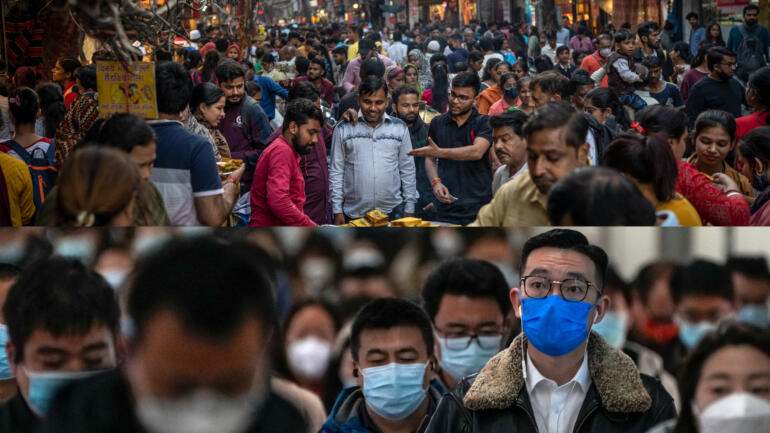Sister cities Beijing and Delhi are both coming to terms with changes in their population status. A UN report projected that India’s population matched, then surpassed China’s at the end of April 2023. Reaction in both cities towards the shift has been varied. So how do people feel about it?
The UN projected on April 24 that India would overtake China as the most populous country by month’s end. According to UN estimates, by the middle of 2023 India will have 2.9 million more people than China.
Residents of sister cities Delhi and Beijing are reacting to the changes.
Some in New Delhi say they’re worried about poverty.
“The people who are having more kids are very poor in this country, so they cannot support higher education for their children. The kids are then kept at home and are often engaged in child labor, which is one of the biggest problems of a growing population,” said Hufeza a student in New Delhi to Reuters in April.
Navan Singh a New Delhi resident told Reuters “(We) need to put a check on it (country’s population) otherwise all the progress that the country is making, vis-à-vis technology, industry, everywhere will go haywire and unemployment and poverty will remain as it is, irrespective of the progress we are making.”
Many Indian economists say there is no cause for alarm regarding the change in population. They point to India’s younger population as a potential source of new educational and employment opportunities.
Over in Beijing, residents seem to be taking the shift in stride.
“From (India’s) elderly population to its birth rate, the size of its middle-aged population is relatively big. So as India’s population surpasses China, its birth rate was (already) quite high. So it was only an inevitable phenomenon for India’s population to surpass China’s,” said Liu, a Beijing resident working in Finance when talking to Reuters.
Some Chinese experts believe that the negative population growth is natural. They say a country’s fertility rate decreases as its social and economic development advances.
While the shift imposes certain challenges, it also provides opportunities. Some say China is moving from high-speed development to high-quality development.
It’s a transition compatible with women having fewer children in China.
“No matter how much subsidies the government gives to mothers or families, the trend of having fewer children is inevitable. I think this is a natural regulation of human beings. The more times we give birth, the less willing we are to do it,” said Nancy, E-commerce worker to AFP.
To reduce stress on certain cities, the Chinese government worked to redistribute the population. In Beijing, population caps were implemented in 2017 to limit the population to 23 million. Some of Beijing’s population was redirected to new urban areas.
No doubt, social scientists will be tracking the real-world impact of these population changes for years to come.
For more, check out our exclusive content on CGTN Now and subscribe to our weekly newsletter, The China Report.
 CGTN America
CGTN America
